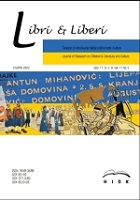Modern Architecture and Ideology in German Children’s Literature
Modern Architecture and Ideology in German Children’s Literature
Author(s): Jörg MeibauerSubject(s): Cultural history, Architecture, German Literature, Theory of Literature, Sociology of Art, History of Art, Sociology of Literature
Published by: Hrvatska udruga istraživača dječje književnosti
Keywords: Architecture; Bauhaus; ideology; propaganda; Stalinallee;
Summary/Abstract: Architecture, in the real world as well as in the fictional world of children’s literature, seems always to be connected with ideology, i.e. a system of beliefs held by a social group or society as a whole. This is shown with respect to German children’s literature dealing with famous buildings of the 20th century, namely the semi-detached house by Le Corbusier and Pierre Jeanneret in the Stuttgart Weißenhofsiedlung that is portrayed in Hannelore erlebt die Großstadt by Clara Hohrath (1935 [1931]), the Hochhaus an der Weberwiese by Hermann Henselmann in the Berlin Stalinallee, figuring in Die Flaschenpost im Hochhaus by Annegret Hofmann and Helga Leue (1988), and the 660–680 Lake Shore Drive Apartments by Ludwig Mies van der Rohe in Chicago, described in Alles Bauhaus? Eine fantastische Zeitreise mit Mia und Lucas by Ingolf Kern, Werner Möller and Kitty Kahane (2019).
Journal: Libri & Liberi: časopis za istraživanje dječje književnosti i kulture
- Issue Year: 11/2022
- Issue No: 02
- Page Range: 231-252
- Page Count: 22
- Language: English

